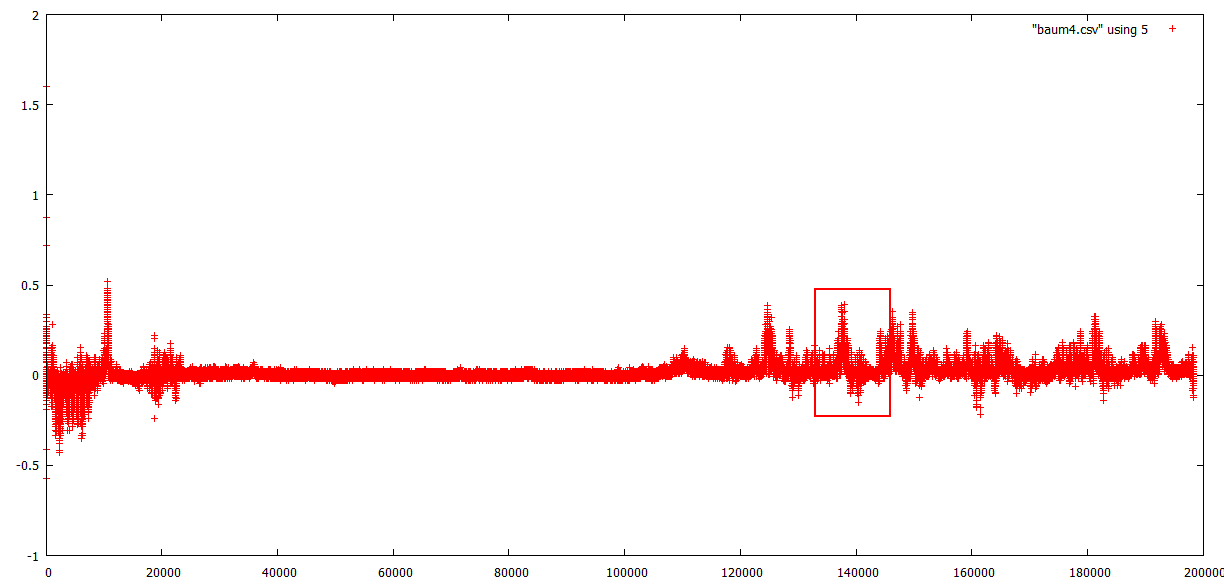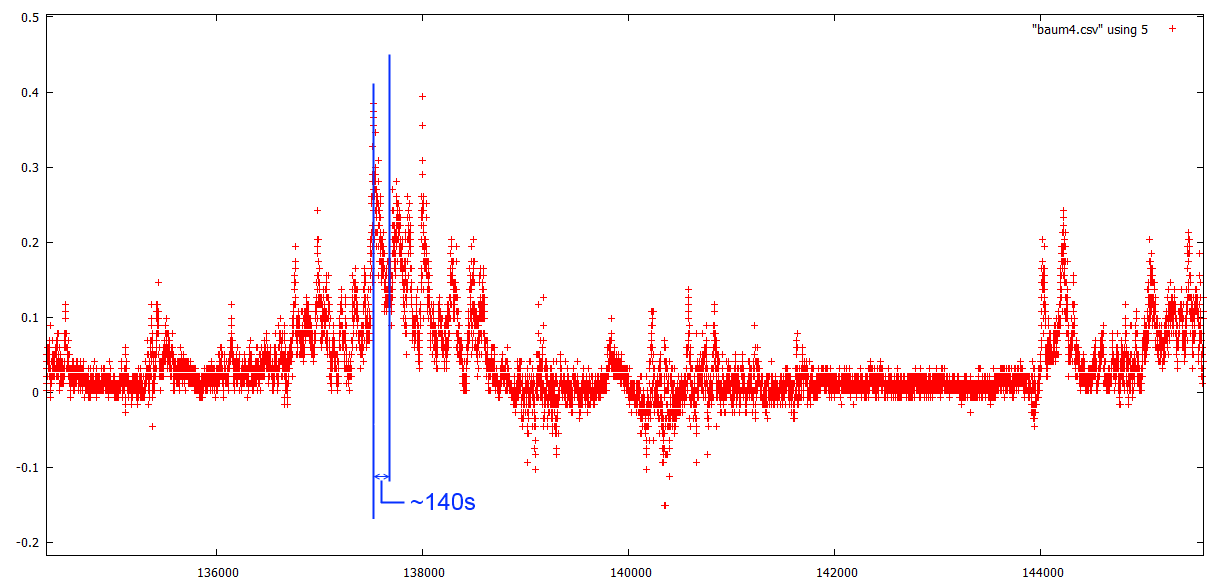Yesterday I took the phone back off the tree (see yesterdays project log entry) and today I look for the first time into the data. The graph shows the acceleration values parallel to the ground over time:

First obvious statement: We had some wind in the evening and during the next day, but the night was very calm. By the way: This is not the raw data, I used the calm period at night to get rid of the baseline (which is caused by gravitation, which is a constant acceleration), so the whole graph is shifted to zero (the unit to the top are m/s2 by the way, to the left there is the number of 500ms timesteps, which means 2*3600=7200 is one hour) . Besides that there seems to be some osscilations so lets look closer at the red rectangle:

There are smaller oscillations, but not around zero, interesting... I think the bow of the stem brought back the constant influence of gravity (perhaps we can use that to run a running average and then have an idea to which angle the stem bowed?). Nevertheless, the oscillations we can see here are in the order of minutes, which is not what I expected from just watching the trees swing in the wind (there I estimated swing periods below 30s). My first guess is that the wind is changing in this time period, but so regulary? Second guess would be that the swing period of trees is indeed in the minutes, I have to do more research about that :) We also have to keep in mind that this is just the x-direction, so if the wind direction changes, this can also have a influence on the data, since this is only the projection of the movement on the x-axis.
All this questions the method to use a phone as a monitoring device for low frequency oscillations, so either I use a more sensitive accelerometer/more sophisticated data analysis in the future or I try to measure the amplitude, which means the distance from the place where the stems is without wind. More about that coming soon!
If one of you guys wants to look into the raw data, you can find it on Github. A second opinion/approach about analyzing the data would be much appreciated!
 Tobiwan
Tobiwan
Discussions
Become a Hackaday.io Member
Create an account to leave a comment. Already have an account? Log In.